What is a cave?
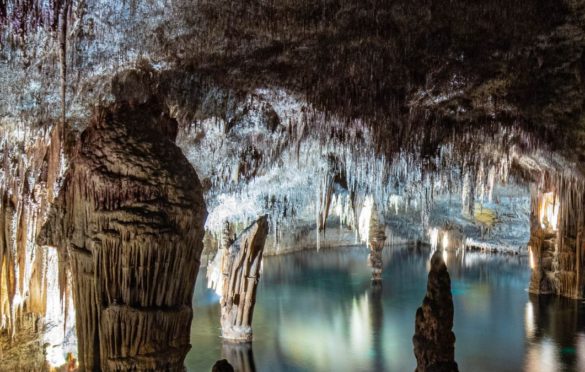
Simply put, a cave is a hole in the ground but, not just any hole. More specifically, it is a naturally formed, underground, air-filled void with an open area or chamber or a series of chambers. These voids can contain long, complex labyrinths of tunnels with one or more openings or just one main opening to the outside (such as an overhang).
A cave may contain specific forms of life and often is large enough to accommodate exploration by humans.

A cave system is a network of caves or a complex cave with many “tunnels” (they are not true tunnels, but rather openings in the rocks caused either by physical or chemical weathering). A cave system can also be surface-water and/or groundwater related, although they may not be physically connected.
The term “cave” is also used to describe other geological features that are not as extensive as underground chambered caves. For example, a sea cave (or marine cave) is commonly a cavity at the base of a sea cliff that has been worn down by wave action in easily weathered rock. They are usually smaller, most likely at sea level, and are affected by the tides. A sea chasm is a deep, narrow sea cave. In addition, coastal caves may be underwater, such as the Sistema Ox Bel Ha in Mexico.
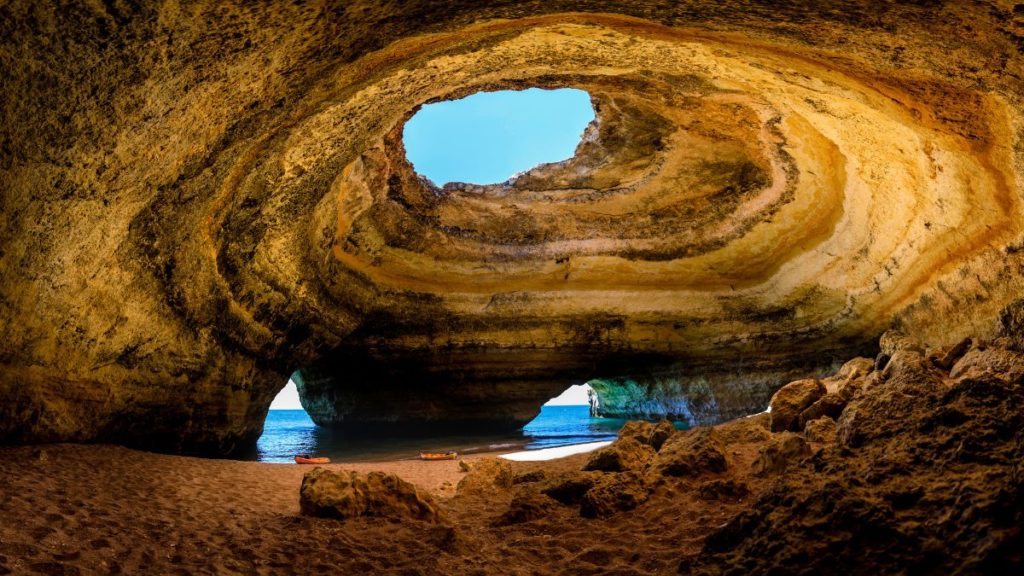
What is a spelunker?
Although many caving names are used interchangeably with each other, a spelunker most often denotes a person who enjoys exploring caves for a hobby or recreation; another name is caver. The name for a scientist who studies caves is a speleologist, and if they are geologists, they are often called geologist·cavers.

What makes a cave’s interior environment so unique?
There are two general features that make a cave’s interior environment unique (not including overhangs): first, sunlight does not reach the interior of larger caves; second, the layers of rock surrounding the cave insulate the interior from surface weather, usually making the cave’s climate relatively stable.
What are the four zones found in most caves?
The majority of caves contain four zones based on the amount of sunlight and cave climate variations (mostly temperature and humidity). The most common divisions are as follows:
Entrance-The cave entrance is usually a moist, shaded area just at the beginning of an opening. It is also the place where many animals-from box turtles and spiders to snakes and raccoons-take refuge.
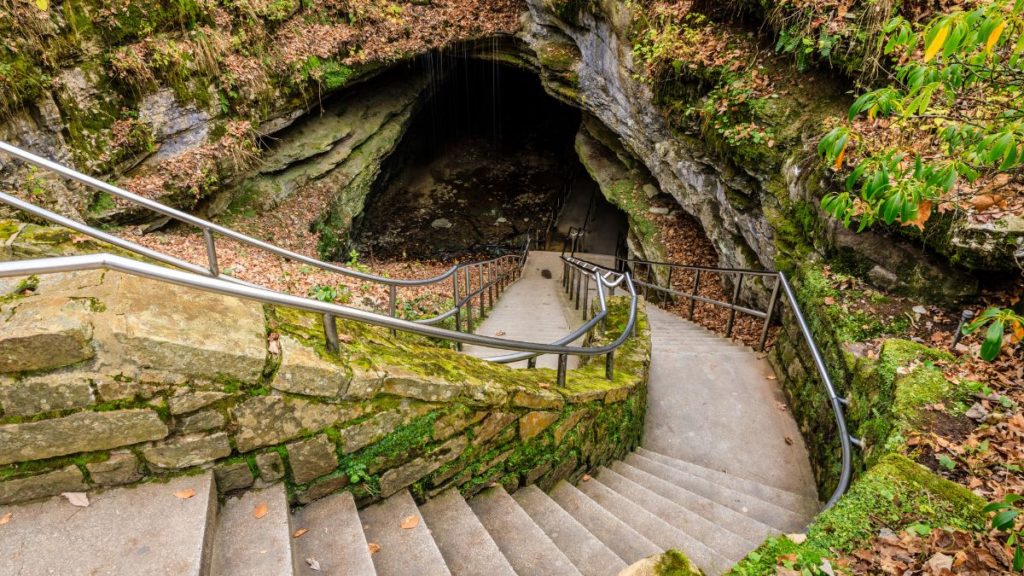
Twilight zone-Although it is the name of a famous television show, the twilight zone of a cave has nothing to do with eerie events. The term defines the area that extends as far as the unaided human eye can see thanks to the outside sunlight that filters in. It is also the most hospitable part of a cave, with cool temperatures and high humidity, both of which fluctuate with the changing weather outside. Most of the animals found here are birds, frogs, snakes, and many types of invertebrates.
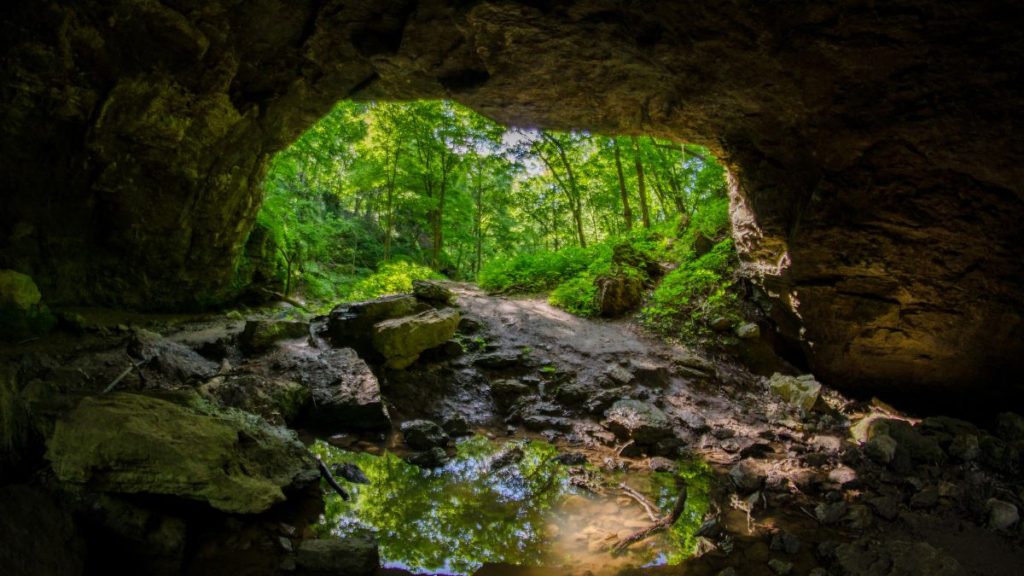
Middle zone-The middle zone-sometimes called the variable-temperature zone is the part of the cave in which the temperature and humidity can be relatively stable, although in some caves air temperatures vary with the seasons in this zone. This is also the place of utter darkness and is often referred to as Stygian darkness (or blackness), a term associated with the mythical underworld. Animals here include bats, cave invertebrates (such as cave crickets), and various types of crustaceans.
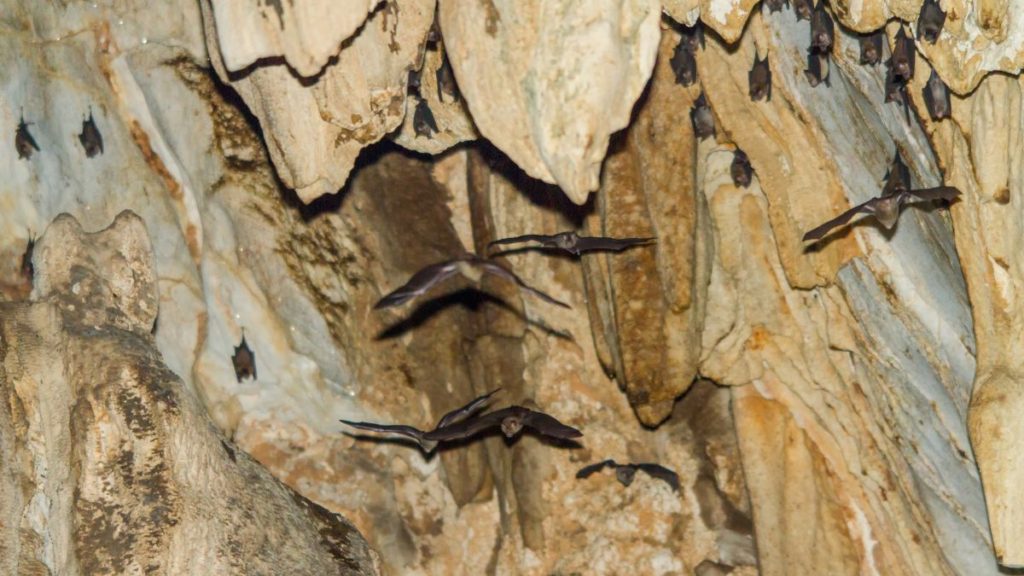
Dark zone-The dark zone, or constanHemperature zone, lies deep inside most caves. Here, the temperature remains a nearly constant 55°F (12.8°C). There is total darkness (the term Stygian darkness is also apt here) and the humidity is often close to 100 percent. An ovefvhelming majority of the animals are blind, colorless, and unique to this zone (existing nowhere else in the world), including certain types of amphipods, pseudo-scorpions, and springtails.

What are primary and secondary caves?
The majority of primary caves develop as the host rock is forming. For example, lava tubes and reef caves are created as rock forms. Although they are not created as the rock is forming, tectonic caves-those formed by the movement of the crust-are also often classified as primary caves. There are several different types of primary caves, but they are the least common to be found.
The most common caves are secondary caves, those formed by a physical or chemical mechanism that transports material away-in other words, most caves that are found around the world. The major mechanism that produces these caves is water dissolution in which minerals such as limestone, dolomite, gypsum, and marble are dissolved by water.
These are also called solutional or karst caves. Examples include salt (such as Sedom Cave in Israel), gypsum (such as the Barbarossa Cave in Germany), limestone (Lechuguilla Cave, “sister” of Carlsbad Caverns, New Mexico), and limestone karst (such as Carlsbad Caverns).
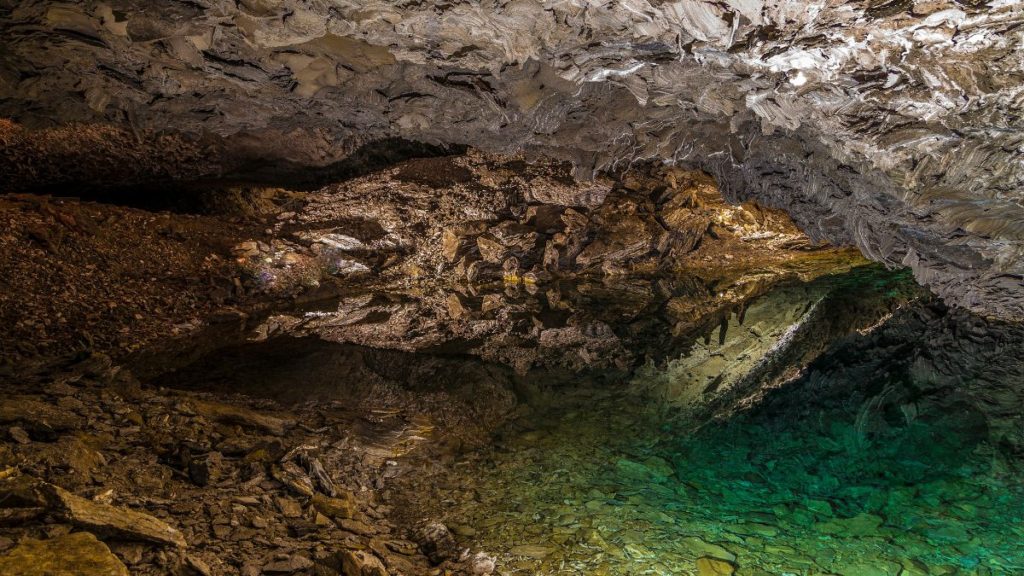
Is there a difference between limestone and karst caves?
It is widely believed that karst and limestone caves are the same, but in reality, there are karst caves in other types of rock and non-karst caves in limestone. Therefore, a good definition for both caves is as follows: Limestone caves are those that form in limestone rock; karst caves are those formed by water in water-soluble rock.
One reason for using the terms interchangeably is obvious: Almost all karst caves are made of limestone, and the majority of limestone caves are karst caves. But karst caves can also include gypsum and salt caves; non-karst caves include tectonic and reef caves.
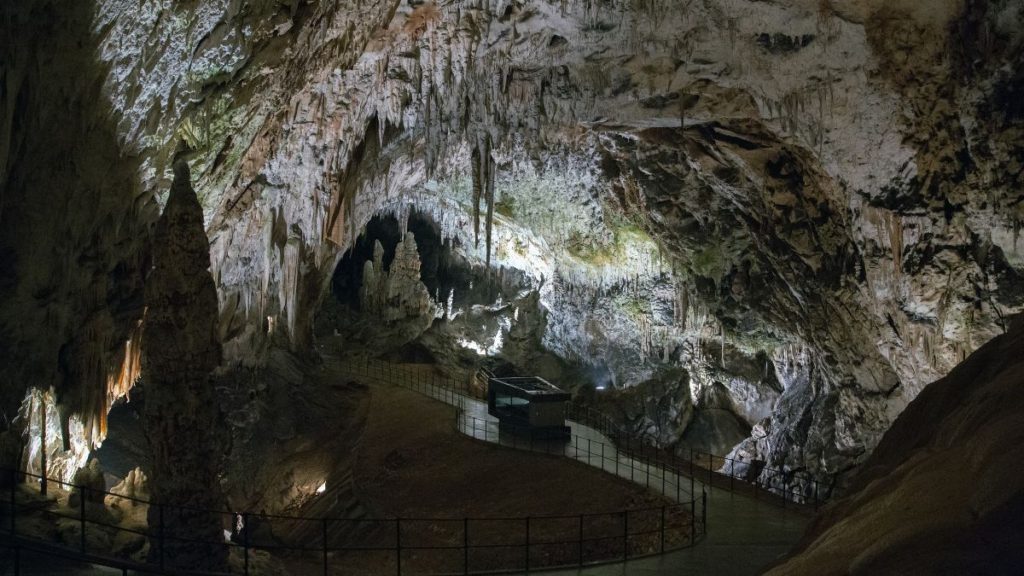
What are the best conditions for karst caves to form?
Karst caves require several specific conditions in which to form. In particular, there must be sufficient layers of water-soluble rock (which can be thousands of feet thick); adequate annual rainfall of about 45 inches (114.3 centimeters) to percolate into the karst area; cracks and fissures into the bedrock (such as from faulting by uplifts or seismic activity); and a variable climate.
But there are differences between karst regions. For example, karst areas along a coast differ from those that are inland; temperate and sub-Arctic karst zones do not resemble those in the tropics. There are also differences between landforms in earth-quake-prone karst zones versus less seismically active karst areas.
Why are there so many limestone karst caves?
It is estimated that more than 90 percent of all caves around the world are limestone karst caves. The reason for this profuse number is rather simple to understand: Limestone is a very common sedimentary rock that is formed from the remains of all types of (mostly marine) animals. This rock forms (and has formed) almost everywhere on the Earth, including along tropical reefs (limestone corals and sponges), on continental shelf areas (in shallow seas), and in large lakes. Many limestone karst sites originated after the rock was exposed to the surface from uplifting processes, such as mountain building; it was then weathered and eventually developed into a karst area.
Where is limestone not so common? On the deep ocean floor (composed mostly of clays), where ocean water absorbs (solutes) the limestone falling from the upper layers of the sea.

Do karst regions provide drinkable water?
Yes, many karst regions (especially those made of limestone) contain aquifers that provide large supplies of water to residential, industrial, agricultural, and commercial areas. In fact, more than 25 percent of the world’s population either lives on or obtains its water from karst aquifers. In the United States alone, 20 percent of the land surface is karst, with karst aquifers providing 40 percent of the country’s potable groundwater.
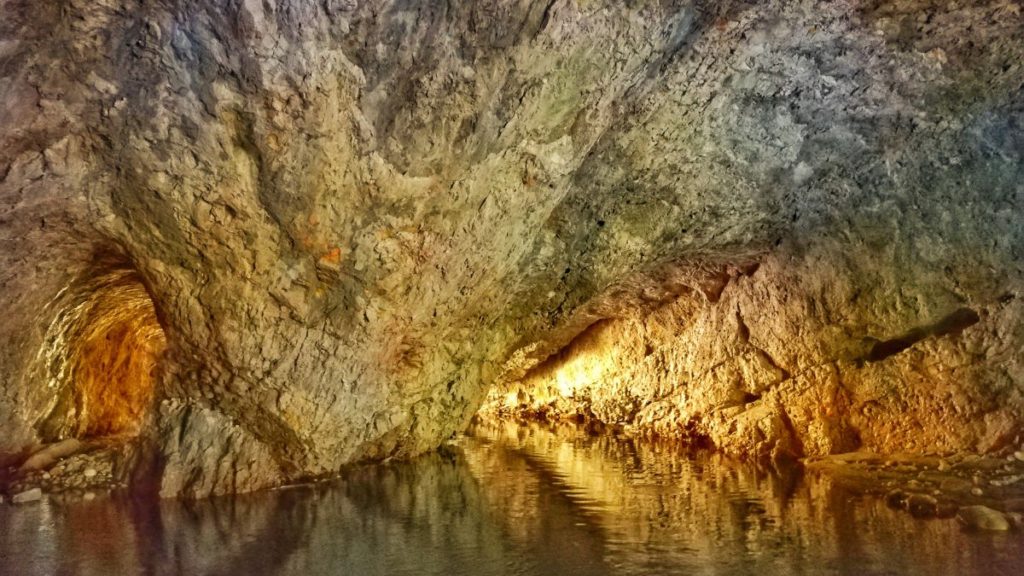
What other features form around karst areas?
There are several other features that form around a karst region besides caves. For example, a sinkhole forms when the roof of a cave collapses; it can also form when limestone rock underlying the soil is slowly dissolved away by water. Sinkholes are not easily detected, as erosion occurs mostly underground. Eventually, enough cave material erodes, thinning the roof and causing it to either collapse or slump.
Other features include natural bridges and tunnels that form when resistant material in a cave collapses. They can also form when a block of bedrock becomes cut off from the main outcrop and is further eroded by wind, ice wedging, and rain.
Another feature is a disappearing (or loosing) stream, in which a small surface stream runs into holes in the ground and partially or completely ceases flowing on the surface.
In actuality, the stream is flowing in and out of a karst landscape. Still another feature is the spring, which is any natural discharge of water from a rock or overlying soil onto the surface of the land or into a body of surface water. A disappearing stream may reemerge as a spring.
How many caves are located in the United States?
It is estimated that more than 30,000 caves exist in the United States, and more are being found each year. Most caves are either run by private groups or are under the auspices of the National Park Service. Show caves are those usually open to the public; wild caves are those that are not open to the general public and/or remain unexplored.
How many caves and karst areas are in the United States national parks?
Caves and karst features occur in 120 National Parks; 81 contain caves and an additional 39 contain karst. Over 3,900 caves are currently known throughout the system, with 11 parks providing some type of regularly guided tour of the caves.
Some examples of popular karst caves include Carlsbad Caverns National Park, New Mexico; Great Basin National Park, Nevada; Jewel Cave National Monument, South Dakota; Mammoth Cave National Park, Kentucky; Russell Cave National Monument, Alabama; Sequoia National Park, California; and Timpanogos Cave National Monument, Utah. Lava tube caves include those found at Craters of the Moon National Monument, Idaho; Hawaii Volcanoes National Park, Hawaii; Lava Beds National Monument, California; and Sunset Crater Volcano National Monument, Arizona. An example of a sea cave can be found at Point Reyes National Seashore, California.
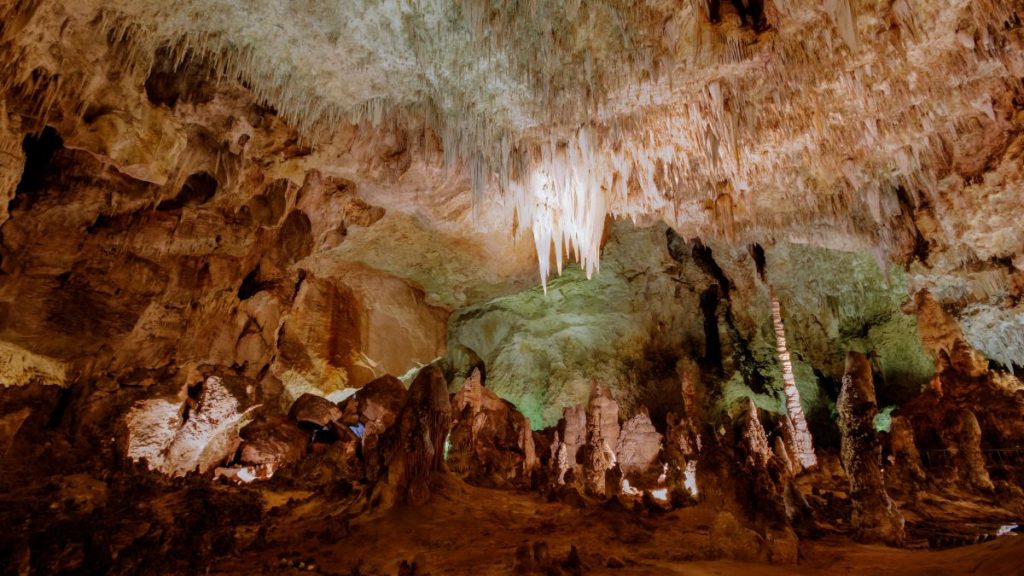
Popular sites with karst features include the Colonial National Historic Park, Virginia; Everglades National Park, Florida; Ozark National Scenic Riverways, Missouri; and Valley Forge National Historic Park, Pennsylvania.
Why is Wind Cave so special?
Wind Cave in Wind Cave National Park, South Dakota, was the seventh national park to be created, and the first cave to be protected within a national park. Wind Cave has interesting characteristics relating to its name. For example, it actually “breathes” air because of an interplay of tunnels, cave openings, and atmospheric pressure differences between the cave and the surface.
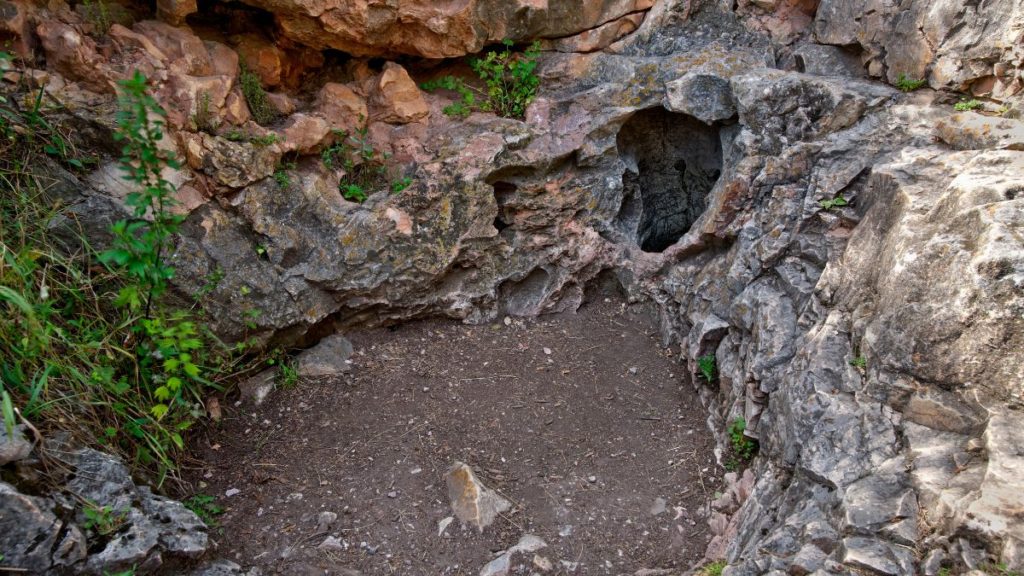
Wind cave is also one of the world’s longest and most complex caves, with 108.10 miles (173.97 kilometers) of known caverns fitting under just over one square mile (2.6 square kilometers) of land. Estimates put the cave at over 300 million years old-about the time when the dinosaurs were just beginning to evolve-making it one of the oldest known caves in the world.

